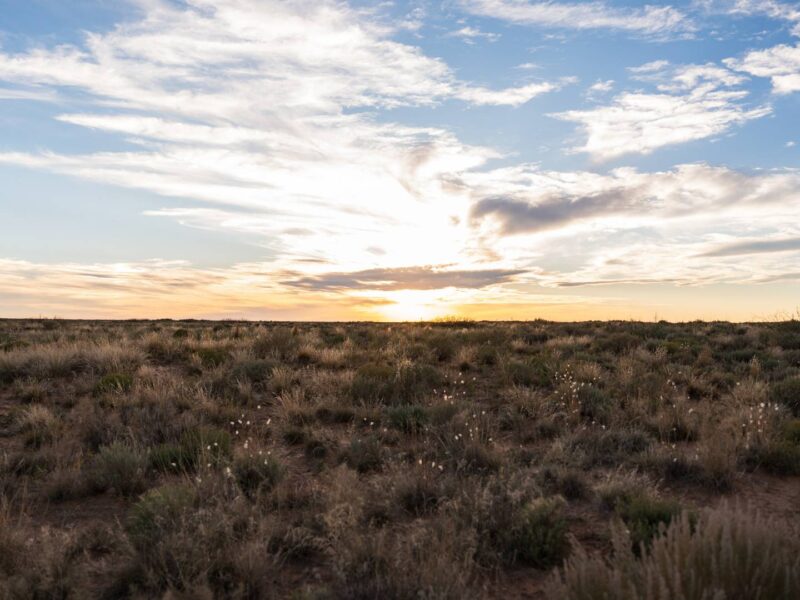5 tips for incorporating flexibility, shared by a past BLM range specialist
Dr. Pat Shaver explains strategies to create as much flexibility as possible within the constraints of federal grazing authorizations.
- Utilize Animal Behavior
As noted in the video, when flexibilities are not available within your grazing allotment, animal grazing behavior can be a tool to utilize different areas of the range at different times. Turning out into a new gate, for example, means the forage in that area will likely be grazed first so entering at new point (if assessable) each year can slightly impact the season of use. Salt licks can have the same impact if moved to a new location. Not only does rotating the lick site give the previous site rest, but it can impact the flow pattern of stock from grazing to salt, to water, for example.
“Herding is a huge tool,” Adrienne Hoskins said. “It’s not always feasible for some operations, but for some it is, and it does wonders.”
- Read Your Existing Permit
Hoskins, who currently works for Pheasants Forever and as the Bureau of Land Management’s (BLM) Outcome Based Grazing Project Coordinator, spent her early career as a BLM range specialist. In her experience, she often found there was more flexibility built into grazing permits than the permittee realized.
“One thing that is the most important is knowing what your grazing authorization actually allows you to do,” she said. “And it’s one of those things that is overlooked because sometimes people look at it and say, ‘oh yeah, I’ve done this forever and I know what it says.’ But they haven’t sat down and read the other terms and conditions as thoroughly as they should, or they haven’t read and understood their grazing decision.”
Specifically, she suggested reviewing the agreement each year and carefully reading beyond the mandatory terms into the other terms and conditions, as well as the grazing decision as those two sections are often where some flexibility can be found.
“If you have flexibility, that’s generally where you would see it, so really understanding that is important,” Hoskins said. “There’s some tidbits in there and reading through them at least once or twice is really helpful.”
- Communicate with your BLM Range Specialist
As a program coordinator, Hoskins has helped facilitate conversations between ranchers and BLM range specialist and has found, at times, the issue is a communication or understanding barrier. If particular language in a permit is hard to understand, she encouraged permittees to discuss it with their range specialist in a respectful manner.
On the other hand, ranchers can prepare for conversations with their range specialists by first reviewing their permit, clearly outlining what it allows them to do, then defining their goals and objectives to share with the range specialist. If the permit does not allow for those objectives to be met, it is something to discuss and consider when the renewal process begins.
“Having a frank conversation and respectfully saying, ‘hey, I’ve recognized this is what I’m authorized to do, I would like to look at changing my authorization to allow flexibility in my grazing season, or my numbers, or my rotation,’ for example,” Hoskins said. “Knowing what you are authorized to do, then having that conversation with your range specialist as to the goals you would like to accomplish can help.”
- Plan Years in Advance
When considering the potential to incorporate more flexibility into an authorization, Hoskins offered the reminder that the timeline for BLM range specialists is often working two years in advance. Changes to authorization, while doable, do require analysis which takes time, so ranchers need to be preemptive in reviewing their agreements and requesting changes.
“Your range specialist is potentially overwhelmed,” Hoskins said. “They want to do good and make changes that are good for the ground as well, I know they do. The rancher coming forward and making sure they know before it’s crunch time, right before they’re getting their grazing decision out, and understanding that it’s going to take a couple years, potentially, to get that in the hopper of workflow for the BLM and being an active participant in that process is important.”
- Be Realistic
Finally, when reviewing an authorization and requesting room for flexibility within the renewal process, it’s important to be realistic. This means not only setting realistic goals for the allotment, but also being realistic about the timeline for change and the health of the range.
The Society for Range Management (SRM) recently launched Good Grazing Makes Cent$ (GGMC) and Western Landowners Alliance (WLA) is now an affiliated organization. GGMC is a new, innovative program, designed to provide a forum for collaboration, community, and coordination between rangeland scientists and those who apply the science such as ranchers, farmers, and land managers. This article was originally published by Good Grazing Makes Cent$ and is republished here as part of our affiliation.
WLA members get the benefit of a discounted GGMC membership. Your GGMC membership includes continual access to the ‘Experts on the Range’ video series, monthly digital newsletters, the blog, access to partnered range consultants available to answer your questions, and an invitation to join conversations on the Facebook Group. On top of that, full SRM membership is included and is complimented by access to the Society’s two journals and discounted SRM events.




